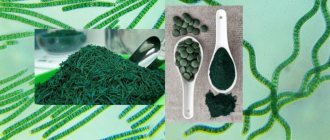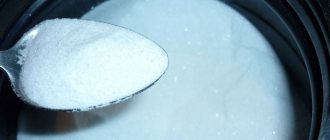Homeopathy for weight loss is a technique aimed at restoring the healthy functioning of the body, as a result of which excess weight disappears on its own as unnecessary ballast.
Homeopathy preparations for weight loss are created on the basis of natural ingredients. A balanced composition of vitamins, microelements and active ingredients affects the body in such a way that all internal processes are normalized. Any excesses and cravings for certain products are a consequence of a violation of the natural regulation of metabolic processes. Homeopathy helps restore balance in the body.
Benefits of homeopathy for weight loss
Homeopathy for weight loss has a number of undeniable advantages that most advertised drugs cannot boast of:
- High efficiency. Losing excess weight is achieved by improving metabolism and overall well-being.
- Complete security. Homeopathy for weight loss can also be used for children, as well as women carrying a child, for whom weight adjustment using traditional medications is contraindicated. Homeopathic medicines do not provoke adverse reactions, while modern medicines cause a bunch of undesirable consequences in the form of dizziness, nausea and general weakness.
- Excellent compatibility with other medications. In this case, you can also be sure that homeopathic medicines for weight loss will not cause side effects, since a specific homeopathic remedy for weight loss is selected individually in accordance with the characteristics of the physical and mental development of the patient with metabolic problems.
The vast majority of people who are overweight do not experience any particular metabolic problems, but are prone to overeating. The share of obesity, which occurs due to hormonal abnormalities and pathological conditions, accounts for only 3%. Source: flickr (sarah colon).
Metabolite drugs for the prevention and treatment of acute alcohol intoxication
An analysis of foreign and domestic publications devoted to the biological and medical aspects of alcoholism shows that it is impossible to approach the prevention and treatment of this disease without taking into account the mechanisms of its formation.
Ethanol is always present in the human and animal body. It is formed from endogenous acetaldehyde (AcA), which is constantly synthesized and present in the cell. The AcA content in it ranges from 0.19x10-9 to 0.27x10-9. Even in such minute quantities, acetaldehyde performs an extremely important function as a regulator of tissue respiration - any decrease in its concentration or disappearance altogether leads to a sharp drop in oxygen consumption by the cell.
The special chemical properties of AcA, its ability, even without the participation of enzymes, to react with active groups of proteins, lipids, sugars, vitamins and other substances lead to the fact that, unlike ethanol, it cannot move freely not only from cell to cell, but even from one subcellular structure to another. Therefore (this should not be overlooked!), if AcA synthesis stops in one cell, then the neighboring cell is not able to compensate for the resulting deficiency.
At the same time, it is known that AcA is a highly toxic compound. However, precisely because the cell really needs it, the body has powerful and strictly organized enzyme assemblies that “clearly monitor” the progress of low concentrations of this toxic substance. With an increase (within normal reaction limits) in the formation of AcA, respiration is activated, the processes of energy formation and anabolic reactions are enhanced, and the functional activity of any cells increases. At the same time, a physiological decrease in the concentration of AcAs is accompanied by a decrease in their activity.
Any supply of alcohol from the outside leads (ethanol has no other conversion routes!), first of all, to a change in the content of AcA in the cell. The increase in its concentration is precisely what causes the picture of acute alcohol intoxication. Once alcohol dehydrogenase (the process of converting ethanol into AcA) is blocked, intoxication cannot be caused even by high doses of alcohol (1-3 g/kg).
Acute alcohol intoxication, when the content of AcA in the cell increases by 1.5-2 times, is accompanied by an increase in oxygen consumption and an increase in the processes of energy formation. All this immediately activates cellular functions and corresponding psychophysical reactions. With an increase in the dose of alcohol (up to 1.5-2 g/kg) and, accordingly, an increase in the intracellular concentration of AcA by 3-4 times, the ability of AcA to inhibit the most important enzymatic complex, the activity of which ensures the normal functioning of the processes of respiration and ATP formation, is clearly revealed. By the way, barbiturates, phenothiazines (pipolfen), tranquilizers, GHB, diphenhydramine, ethyl alcohol and some anesthetics have similar inhibitory properties, which can explain their rather pronounced ethanol-potentiating effect. It is quite clear that when AtsA appears inhibitory properties, the picture of intoxication also changes - there is an increase in intoxication.
With a further increase in concentration, AcA exhibits the properties of a highly active chemical compound and the ability to nonspecifically interact (bind) with the NH2 and COOH groups of proteins with the formation of various stable and unstable compounds. Such nonspecific inhibition of most enzymes causes the appearance of the narcotic phase of intoxication. In such a situation, AcA itself “inhibits” the enzymes that detoxify it, and the presence of AcA in tissues 12-14 hours after intoxication forms the picture of a morning hangover.
Due to the fact that all cells of the body possess aldehyde-oxidizing enzymes, their activity increases significantly with chronic exposure to ethanol. Maximum synchronization and activation of aldehyde-oxidizing systems is the basis for the formation of increased tolerance.
It is important to note: with chronic alcoholism and with a consistently increased activity of aldehyde-oxidizing enzymes, it is enough to reduce or stop alcohol consumption (reduce the influx of exogenous AcA), and symptoms of its deficiency immediately appear. A decrease in the concentration of AcA (this was discussed) is accompanied by a sharp reduction in oxygen consumption, a violation of redox reactions, energy production processes and, accordingly, the functions of cells of all tissues - the brain, myocardium, liver, kidneys, muscles. As a result, against the background of AcA deficiency, disruption of cellular functions manifests itself in the form of alcohol withdrawal syndrome (AAS). It is the lack of AcA that can explain the ideal reduction of AAS with ethanol and paraldehyde (AcA trimmer).
However, we must not lose sight of the fact that in alcoholism against the background of deprivation, insufficiency of endogenous AcA can also develop due to other reasons. In one case, this may be due to a decrease in AcA synthesis due to its periodic accumulation due to alcohol consumption. Another variant of AcA deficiency occurs (even with increased endogenous synthesis) due to its rapid oxidation into acetic acid with a significant increase in the activity of aldehyde-oxidizing enzymes. The insidiousness of this variant of AcA deficiency lies in the fact that the increased synthesis of endogenous AcA does not allow the aldehyde-oxidizing enzymes to “calm down”. As a result, the required normative levels of AcA concentration are not achieved in the cell.
And yet, with a variety of molecular mechanisms leading to the appearance of endogenous AcA deficiency, the basis of the pathological craving for alcohol is precisely the drop in its concentration level below normal.
Achieving a physiological balance between the synthesis of AcA and its transformation (into endogenous ethanol or acetic acid), capable of normalizing the level of endogenous AcA, in turn, determines the possibility of the appearance of remission in the dynamics of the disease.
Due to the fact that restoration of balance (normalization of AcA metabolism and remission) is possible, a number of questions naturally arise. In particular, why does the disease recur again, why does the duration of remission vary even in the same patient, and, finally, what are the mechanisms for the sudden appearance and spontaneous disappearance of craving for alcohol?
The answers to them, paradoxically, are simple: everything depends on the nature of the “behavior” of the balance and the reactions that ensure it. Thus, the balance between the synthesis of endogenous acetaldehyde and its oxidation is sufficiently disrupted, and a relapse of the disease immediately occurs. Depending on how long the body is able to “ensure” this balance, the duration of remission will be determined. Finally, if the cell, when the physiological concentration of AcA falls, is able to quickly restore it, it means that the body itself (without the use of alcohol or drugs) can stop the emerging pathological desire.
To explain why normalization of AcA is so difficult to achieve in alcoholism and, as a rule, is temporary, we should recall the leading role of aldehyde-oxidizing enzymes, which have broad substrate specificity, in the transformation of AcA. By sharply increasing their activity during chronic exposure to ethanol, it is the aldehyde-oxidizing enzymes that cannot normalize their activity and approach a state of stable biological equilibrium. In such a situation, the activity of these enzymes (due to the same broad substrate specificity) can be suddenly and significantly activated under the influence of not only ethanol and AcA, but also any other aldehydes and compounds formed during the metabolic process.
First of all, aldehyde-oxidizing enzymes are affected by biogenic amines and steroid hormones. When oxidized, they turn into aldehyde forms. Therefore, any stress (stressful, physical, etc.), accompanied by a “release” of catecholamines and steroid hormones, can provoke disturbances in AcA metabolism and relapse of the disease in alcoholism.
The question quite naturally arises: why does the use of teturam (disulfiram - an inhibitor of aldehyde-oxidizing enzymes) not solve the main problems of alcoholism? The fact is that in the body, when exposed to teturam, aldehyde dehydrogenase isoenzymes are synthesized, which, after discontinuation of the drug, further increase the power of the already activated aldehyde-oxidizing enzymes. The appearance of such isoenzymes is necessary for the body in order to prevent disturbances in the metabolism of catecholamines, serotonin, and steroid hormones, which are transformed through the aldehyde stage and with the participation of aldehyde-oxidizing enzymes, during the period of action of the drug. Induction of isoenzymes also contributes to alcohol consumption against the background of teturam. This explains why alcohol consumption after powerful teturam therapy can become uncontrollable.
Based on the foregoing, alcoholism can be considered as a form of molecular pathology, which is based on disorders of acetaldehyde metabolism provoked by chronic alcohol consumption. Therefore, prevention and correction of such disorders should be carried out, first of all, in accordance with the laws of metabolic regulation. And if so, then these measures should be aimed at activating physiological metabolic reactions that contribute to an increase in the rate of elimination of AcA (and ethanol) both during the period of acute alcohol intoxication and at the stages of the aftereffect of ethanol. Only under such conditions is the cell (tissue) “deprived” of the opportunity, firstly, to accumulate AcA in high concentrations (the severity of intoxication decreases), and, secondly, to be in prolonged contact with the toxic factor. Accelerating the elimination of AcA during the period of intoxication can automatically (secondarily) significantly weaken or completely eliminate the hangover state. In turn, with regular exposure to alcohol, an increase in the rate of AcA removal (and, accordingly, a decrease in the severity and duration of intoxication) makes it possible to actively reduce the values of specific components, which ultimately add up and form a critical cumulative dose.
Complex “triad” of metabolite therapy
To implement all the above provisions, fundamentally new drugs are required - alcohol protectors, which have the properties of metabolic regulators, belonging to the class of natural metabolites, capable of activating the physiological mechanisms of detoxification, having as few side effects as possible. Similar drugs include Limontar® (in tablets of 0.25), Glycine (sublingually in tablets of 0.1) and Biotredin® (sublingually in tablets of 0.1). All three drugs were developed purposefully, based on modern ideas about the molecular actions of ethanol, were successfully tested, approved for widespread medical use and introduced.
Limontar® is a metabolism regulator and contains succinic and citric acids. The molecular mechanism of detoxification with Limontar® during alcohol intoxication is based on a decrease in the level of acetaldehyde (AcA). After taking ethanol, an increase in the concentration of AcA is observed, which leads to a disruption of redox processes. As a result, the cell loses the ability to oxidize a number of substrates - isocitric, malic, glutamic acids and, among others, AcA. In this case, the accumulation of energy in the form of ATP occurs mainly due to the oxidation of succinic acid, the so-called amberized respiration. At high concentrations, AcA can even inhibit amber-dependent breathing, which corresponds to the appearance of a high phase of intoxication.
Limontar® is recommended to be taken both in advance (as an alcohol protector) and during the period of intoxication. The drug helps to increase the formation and oxidation of succinic acid, which, in turn, ensures the implementation of metabolic reactions that are involved in the detoxification and oxidation of AcA, converting it into acetic acid. This effect of Limontar® is manifested in a decrease in the severity of intoxication and an increase (1.5-2-3 times) in the ethanol elimination constant. During the period of intoxication, the administration of Limontar® 0.25 g at intervals of 1.5-2-3 hours allows physiologically to support the vital activity of cells and detoxification processes. In this regard, the effect of Limontar® is fundamentally different from the “doping” sobering effect of phenamine and similar drugs.
Limontar® should not be treated as a sobering drug. This is a remedy for the treatment of acute alcohol intoxication: by uniformly supporting cellular respiration associated with the formation of ATP, it helps to implement a number of other important metabolic redox reactions. As practice shows, ultimately, the use of Limontar® as an alcohol protector for the treatment of acute alcohol intoxication can reduce or eliminate the symptoms of a hangover, and in case of alcoholism, the symptoms of alcohol withdrawal syndrome (AAS).
It is not recommended to use AAS Limontar® in the acute phase. However, one should not discount the fact that its use during periods of acute intoxication and asthenic conditions helps restore the secretory, acid-forming function of the stomach and the gag reflex. In case of asthenic manifestations (both with AAS and the period of remission), a course of Limontar® for 3-7 days helps to reduce lethargy, drowsiness, increase mental and physical performance, and normalize the patient’s appetite. After discontinuation of the drug, no relapse of the asthenic syndrome is observed.
Limontar® is recommended to be taken in powder form, diluted in ? a glass of water with the addition of a small amount of baking soda, with Borjomi-type mineral water or juice. If you are prone to arterial hypertension, it is recommended to start taking the drug with? pills. If, after measuring your blood pressure, it has not changed while taking the medication, you can recommend using Limontar® in the future.
The drug Glycine, also being a metabolic regulator, is fundamentally different in its mechanism of action from Limontar®. As a chemical compound, this aminoacetic acid has high conjugating properties: when it interacts with aldehydes, ketones, substances containing SH-, NO2-, COOH-groups, either new metabolites are formed, or (in the case of foreign xenobiotics) non-toxic, easily removed from organism conjugates. When the concentration of AcA in cells increases, Glycine combines with AcA without the participation of enzymes to form the non-toxic compound acetylglycine. This reaction, by the way, can be observed in a test tube with water. Acetylglycine is subsequently used by the body for the synthesis of proteins, hormones, enzymes and other macromolecules.
Sublingual administration of the drug Glycine in tablets of 0.1 g, both in advance (20-120 minutes), and during the period of intoxication, as well as at the stages of the aftereffect of alcohol, stimulates the interaction (conjugation process) of glycine and AcA, which ensures the detoxifying effect of Glycine. In practically healthy children, adolescents, adults, as well as patients with alcoholism, Glycine, according to EEG data, activates the frontal lobes and lower parts of the occipital region, increases attention, increases the speed of psychophysiological reactions and computational operations. With regular use of Glycine, its nootropic effect is clearly visible.
By interacting with glycinergic receptors of cerebral cortex cells, Glycine activates inhibition processes. Displaying the properties of β1-adrenolytic, it is able to protect the cell from the excessive influence of catecholamines. These properties of glycine determine its stress-protective, anti-stress and calming effect. It is important to emphasize that, although Glycine has a calming effect, its other properties have nothing in common with tranquilizers.
Comparative effect of Glycine and tranquilizers
| Effects | Tranquilizers | Glycine |
| Sedation | + | + |
| Muscle relaxation | + | + |
| Alcohol effect | strengthen | weakens |
| Addiction | cause | No |
| Speed of psychophysiological reaction | reduce | increases |
| Mental performance | weaken | enhances |
| With increasing dose, sedative effect: | is growing | disappears |
| For transport drivers and operators of various specialties: | Not recommended | shown |
Significantly different from tranquilizers, Glycine in patients with alcoholism, both during AAS and during remission, by activating physiological reactions, is able to reduce anxiety and depressive disorders, reduce the level of aggressiveness, conflict, improves the process of falling asleep, normalizes and deepens sleep. It is noteworthy that these effects, when taken sublingually in very small doses of the drug, are realized due to the synthesis of glycine in the nervous and other tissues. At the same time, the body itself, within the framework of physiological laws, using endogenous glycine, normalizes deviations in health caused by alcohol consumption. This mechanism of action ensures complete safety of using this drug.
Due to the fact that Glycine has a complex (nootropic, stress-protective and detoxifying effect), the drug can be widely used both for the prevention and treatment of intoxication conditions, including alcoholism. At the same time, as a 1.5-2-year follow-up observation of patients with alcoholism who almost constantly use Glycine showed, the stress-protective and anti-stress effect of the drug in most cases is assessed by patients as a “craving relief” effect. Considering the pharmacological properties of Glycine, there is no doubt: we are talking about the effect of the drug on the motivation factor. At the same time, the possibility cannot be excluded that as a β1-adrenolytic and as a conjugator of aldehydes formed from biogenic amines at the time of psycho-emotional stress, Glycine (secondarily) prevents the activation of aldehyde-oxidative systems. Due to this, perhaps, a sensation appears, verbalized by patients as “removal of cravings.” *
The pharmacological property of Biotredin® to suppress the primary pathological craving for alcohol and provide a therapeutic effect in alcohol syndrome was established at the stage of clinical trials. The Instructions for Use of Biotredin®, approved by the Pharmacological Committee of the Ministry of Health of the Russian Federation, states: “The drug is prescribed to persons who abuse alcohol, patients with chronic alcoholism when the pathological craving for alcohol is actualized, combined with affective (irritability, decreased mood, internal discomfort), sensory (feeling of hunger ) and ideation (thoughts about alcohol) disorders, with alcohol withdrawal syndrome, as well as to maintain remissions.”
In risk groups and people who abuse alcohol, Biotredin® is recommended to be prescribed in courses (5-10 times a year) of 1-3 tablets per dose 2-3 times a day for 10-30 days. It is not recommended to take Biotredin® during periods of intoxication - its effect disappears.
Glycine and Biotredin® are recommended to be taken sublingually in tablet form or in powder form after crushing the tablet. When taken orally, the drug has no effect.
To identify hidden cravings for alcohol, it is recommended to take 2-3 Biotredin® tablets on an empty stomach. The appearance after 10-30 minutes of dizziness, facial flushing, sweating, and drowsiness indicates the presence of a “hidden craving” for alcohol.
Undoubtedly, Limontar®, Glycine and Biotredin® do not solve all the problems of alcoholism. However, with their introduction, completely new opportunities have emerged for the true prevention of negative consequences, complications and relapses of the disease. And yet, the most important thing is that there is a clear understanding of the need to treat the acute stage of alcohol intoxication. To do this, during the period of intoxication, even with sporadic consumption of alcoholic beverages, it is recommended to immediately begin treatment. Every 1.5 - 2 hours a person should receive a tablet (but no more than 4 per day) of Limontar®. On the next (first) day after intoxication, to remove toxins from the body, 3 times (every half hour), then every 2 hours, a Glycine tablet (8-9 tablets per day). From the second day, it is necessary to carry out a 10-day course of treatment according to the following (basic) regimen: a Glycine tablet is taken 3 times a day, a day, 10-15 minutes after its complete dissolution, a Biotredin® tablet is taken. Subsequently, over the course of a month, it is recommended to take a Glycine tablet 2-3 times, and in parallel, every 10 days, carry out “tests” with Biotredin®: If after the first course a hidden craving for alcohol is revealed, treatment should be extended for 5 days. If the “test” with Biotredin® is positive, it is recommended to carry out a full 10-day course of treatment with Glycine and Biotredin® according to the main regimen.
Taking Limontar®, Glycine and Biotredin®, as experience shows, allows in 60-75% of cases to reduce or completely stop drinking alcohol, lengthen the period of remission and reduce the duration of the frequency of binge drinking.
The essence of homeopathy for weight loss
Homeopathy for weight loss and homeopathic medicines show high effectiveness in getting rid of excess weight due to the ability to normalize processes related to metabolism and metabolism. As a result, active burning of adipose tissue occurs, resulting in loss of body weight.
Homeopathic medicines for weight loss contain special substances that have a positive effect on health and overall well-being. The composition of such products has a complex effect.
Why is obesity dangerous?
Obesity is the cause of diseases, some of which are dangerous to health and even life:
- hypertension – excess weight increases blood pressure, which, in turn, can cause a heart attack or stroke;
- osteochondrosis – excess weight puts increased stress on the bone apparatus;
- diabetes – fat, especially localized in the torso and abdomen, increases the risk of developing type 2 diabetes up to 10 times;
- infertility - it has been experimentally proven that problems with conceiving a child disappear after the future parent, on the recommendation of a gynecologist, normalizes her weight;
- bronchitis and pneumonia - fat cells are deposited not only under the skin, but also on internal organs, including the lungs, making breathing difficult and provoking inflammatory processes.
Thus, obesity requires treatment - an integrated and competent approach.
Review of drugs
Homeopathy for weight loss is represented by a wide variety of remedies:
- Ignatia a positive effect in the presence of excess weight associated with emotional and nervous experiences that “eat up” with copious amounts of food. Due to the fact that the drugs are aimed at restoring the functioning of the nervous system. Along with the extra kilos, you get rid of excess excitability.
- Graphites is aimed at combating excess body weight caused by increased gas production and constant bloating.
- Calcarea carbonica effectively suppresses uncontrollable appetite by acting on brain receptors.
- Argentum Nitricum helps regulate glucose levels in the blood, for this reason it can easily “dull” the love of sweets.
- Natrum muriaticum is prescribed to patients with fat deposits in the buttocks and thighs. Basically, such “obesity” affects patients suffering from anemia, poor metabolism, and also susceptible to frequent depression.
- Lycopodium is indicated for patients in whom fat deposits also accumulate in the pelvic area. There are significant problems with stool, when the process of bowel movement is difficult, and constant flatulence is tormented. Such patients have a hot temperament and lovers of sweets.
- Preparations from Heel , developed by German homeopathic scientists and homotoxicologists, can also help solve the problem of weight normalization:
- Ubiquinone compositum - used for metabolic disorders;
- Coenzyme compositum - normalizes the reactions of the endocrine system.
- Graphites-Homaccord - for digestive disorders.
To reduce weight due to lymphatic drainage, Heel offers homeopathic preparations:
- Thyreoidea compositum;
- Lymphomyosot;
- Solidago compositum S.
All kinds of drugs, remedies for extra pounds and homeopathy in general cannot replace active physical activity and dietary nutrition, as a result of which sports activities and a proper diet must be present in the process of losing weight. Source: flickr (Eugene Evehealth).
Causes of obesity
All causes of obesity can be divided into two groups:
- gaining excess weight due to exceeding the amount of calories a person needs;
- excess of normal body weight due to hormonal disorders.
Important! Often these two reasons are interconnected.
In the first case, the danger lies not only in the increased load on all organs of the digestive tract. But, paradoxically, the body suffers from a lack of the substances it needs.
It is physically possible to exceed your daily calorie intake only by consuming “empty calories,” that is, foods with low nutritional value but high calorie content. As a result, the body does not receive the necessary substances, vitamins, microelements and the brain sends hunger signals, even if a person consumes food in large quantities.
The abundance and cult of food, a lot of ways to speed up the process of preparing it, increasing calorie content, all this contributes to the fact that the problem of normalizing weight becomes acute for a large number of people. Source: flickr (Malene Hein).
Hormonal diseases that lead to obesity are quite rare in practice. Decreased thyroid function, tumors in the pancreas, adrenal glands and pituitary gland are the main causes of weight gain.
A decrease in the amount of thyroid hormones (hypothyroidism) leads to a slowdown in metabolism, so fat is not burned, but deposited. Other reasons described above are provocateurs of increased production of corticosteroids, which make a person fat.
The concentration of corticosteroids may also increase when taking appropriate medications - glucocorticosteroids, necessary for the treatment of autoimmune diseases.
How do homeopathic medicines work?
The described drugs, firstly, normalize the activity of the digestive tract, secondly, improve the functioning of the endocrine system, and, finally, calm the nervous system.
Important! Treatment requires consultation with a homeopath, who will select medications after testing the human body, determining its “psychological portrait” and the causes of obesity.
Due to this, a person easily and without disruption follows the rules of a balanced diet with a reduced calorie content, and his body functions normally.
Homeopathy does not dissolve fat, but improves metabolic processes in the body and affects the initial mechanisms that provoke weight gain.











